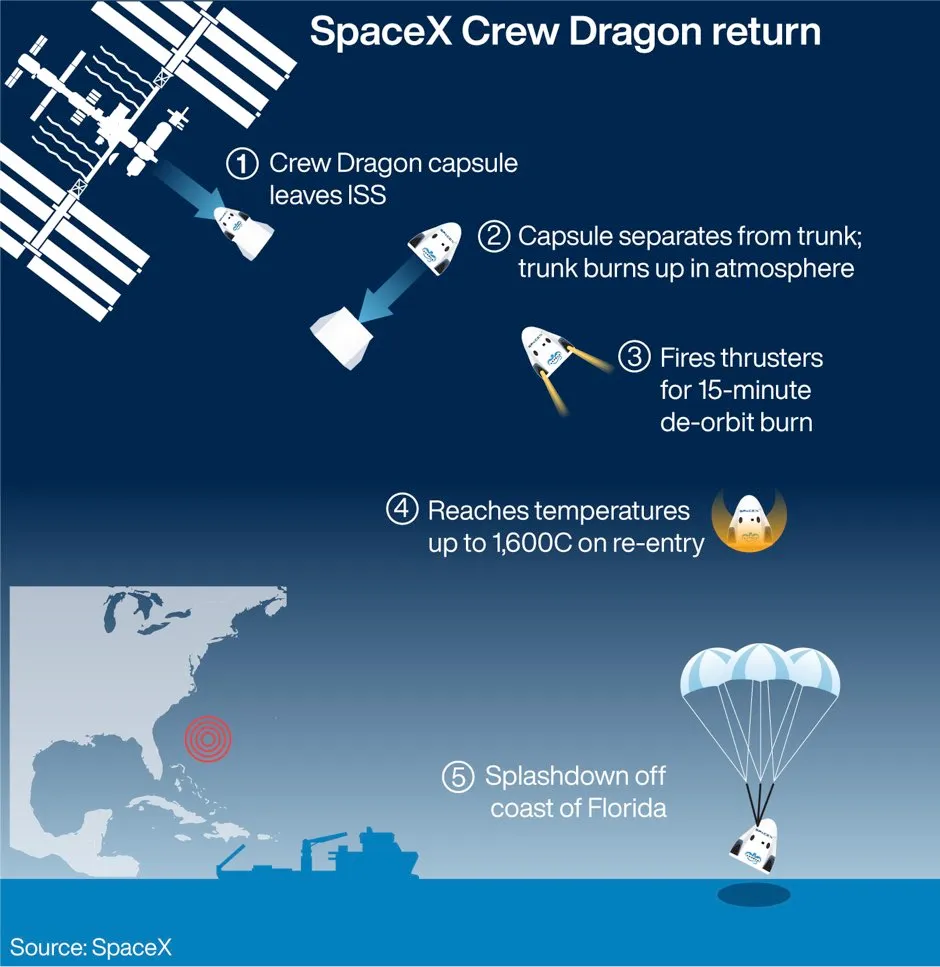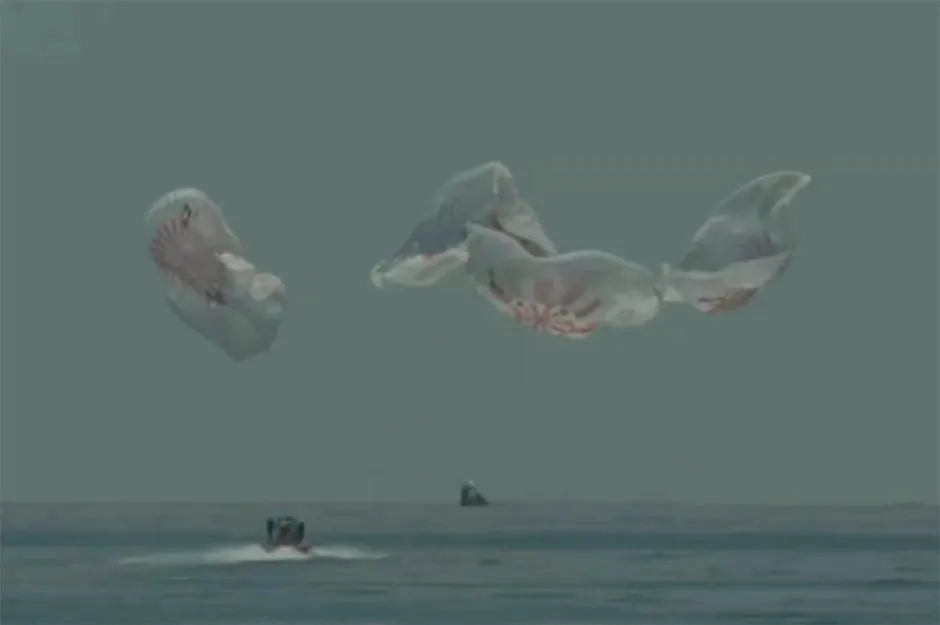NASA astronauts Robert Behnken and Douglas Hurley are back on Earth after the first splashdown return in 45 years.
The pair landed in the ocean, off the coast of Florida, at around 19:48 BST on Sunday, after a 19-hour journey from the International Space Station.
The mission control said just after splashdown: “On behalf of the SpaceX and NASA teams, welcome back to Planet Earth. Thanks for flying SpaceX.”
Read more about space exploration:
- How will private space travel change the way we explore the Solar System?
- Space mining: the new goldrush
- Space exploration: how might the next 50 years progress?
Behnken and Hurley made history on 30 May when they became the first people to launch into low-Earth orbit on a commercial spacecraft, built by SpaceX.
Their mission, named Demo-2, also marked the first time NASA had launched astronauts from US soil in nine years.
SpaceX’s astronaut carrier, the Crew Dragon, landed in the water off Pensacola, western Florida.
The last time astronauts made an ocean landing was on July 1975 during an Apollo mission.

Since then, they have always landed on terra firma.
NASA’s Space Shuttle, which was retired in 2011, landed on runways, like a commercial aeroplane.
The other modern crewed vehicles, including Russia’s Soyuz and China’s Shenzhou, are designed to land on the ground.

The splashdown has ushered in a new era for NASA, which now has at least one commercial spacecraft ready to launch astronauts into space from US soil.
It was the final step in the mission designed to test SpaceX’s human spaceflight system – including launch, docking, splashdown and recovery operations.
The Crew Dragon faced scorching temperatures of around 1,900°C as it entered the Earth’s atmosphere.
Although the space station orbits at around 260 miles above Earth, it took almost a day for the capsule to splash down.
The Crew Dragon performed a series of manoeuvres to lower its orbit and get closer to the splashdown site.
It then deployed parachutes to slow its speed from 17,500mph to around 15mph before splashing down.

The re-entry caused a temporary communications blackout, which was brought on by an envelope of hot air surrounding the capsule.
Spacecraft engineers, recovery experts and medical professionals on the SpaceX recovery ship, called Go Navigator, are helping the astronauts get out of the capsule as they begin readjusting to gravity.
Around a dozen private vessels near the splashdown area were asked to leave as they attempted to approach the spacecraft – creating a potentially dangerous situation as the Crew Dragon contains hazardous chemicals, such as hydrazine and nitrogen tetroixde.
NASA administrator Jim Bridenstine said the presence of these private boats “was not what we were anticipating,” and that“we need to do a better job next time for sure.”
The re-entry marks the end of SpaceX’s human spaceflight demonstration mission.
The aerospace company’s first operational flight is expected to take place in September, where a second Crew Dragon spacecraft will carry four astronauts to the space station.
The capsule that carried astronauts Hurley and Behnken into space will be refurbished and launched on SpaceX’s second operational crewed mission, Crew 2, due to take place early next year.
Another aerospace company Boeing is also developing spacecraft to ferry astronauts to the space station, as part of NASA’s Commercial Crew Program.
Reader Q&A: Why can’t we fly planes into space?
Asked by: Dennis Robertson, Sheffield
Planes can and have flown into space for over 50 years – though not the kind you see at the airport. That’s because conventional planes need air for both propulsion and lift, and space is essentially a vacuum.
The first plane to reach space was the X-15, designed in the mid-1950s for the US National Advisory Committee for Aeronautics (NACA), forerunner of NASA. It made its first flight in June 1959, using thin, stubby wings for generating lift and stability while travelling at over five times the speed of sound, plus a revolutionary form of rocket motor whose power output could be varied like a conventional aircraft engine.
In 1963, an X-15 using a propellant of oxygen and ethyl alcohol reached an altitude of over 100km, widely recognised as the altitude at which space begins. The lessons learned were fed into the Space Shuttle programme and today’s commercial spaceplane ventures like Virgin Galactic.
Read more:
